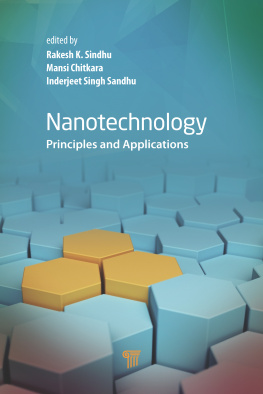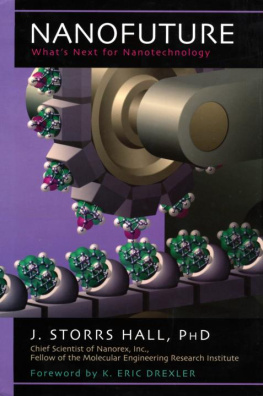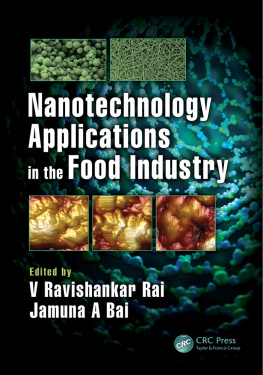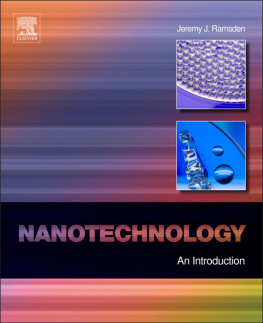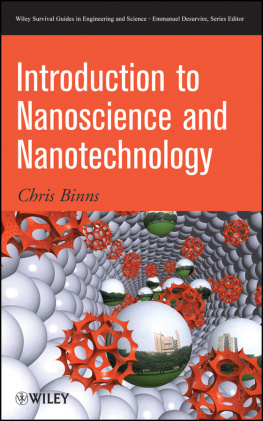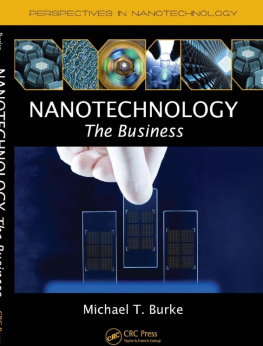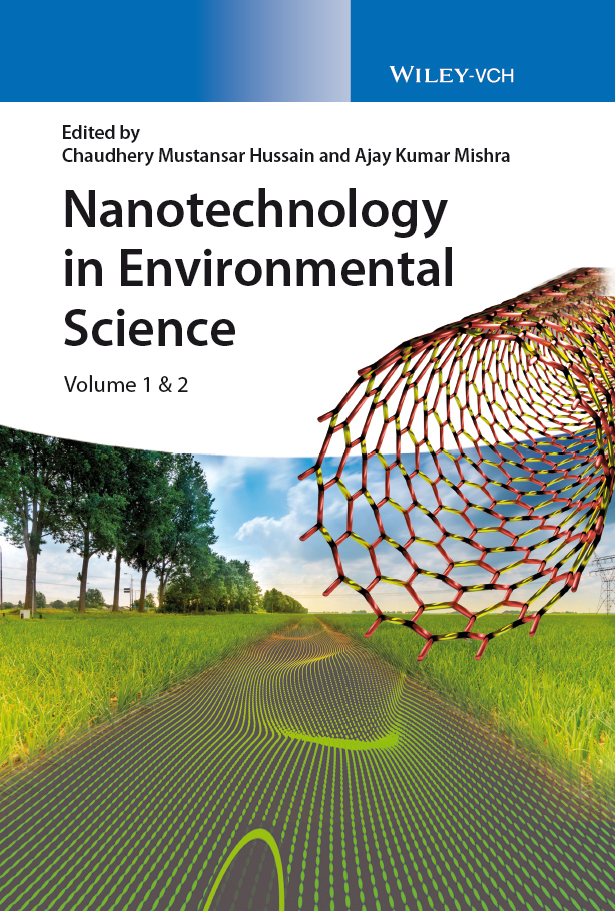
All books published by Wiley-VCH are carefully produced. Nevertheless, authors, editors, and publisher do not warrant the information contained in these books, including this book, to be free of errors. Readers are advised to keep in mind that statements, data, illustrations, procedural details or other items may inadvertently be inaccurate.
Library of Congress Card No.: applied for
British Library Cataloguing-in-Publication Data
A catalogue record for this book is available from the British Library.
Bibliographic information published by the Deutsche Nationalbibliothek
The Deutsche Nationalbibliothek lists this publication in the Deutsche Nationalbibliografie; detailed bibliographic data are available on the Internet at .
2018 Wiley-VCH Verlag GmbH & Co. KGaA, Boschstr. 12, 69469 Weinheim, Germany
All rights reserved (including those of translation into other languages). No part of this book may be reproduced in any form by photoprinting, microfilm, or any other means nor transmitted or translated into a machine language without written permission from the publishers. Registered names, trademarks, etc. used in this book, even when not specifically marked as such, are not to be considered unprotected by law.
Print ISBN: 978-3-527-34294-5
ePDF ISBN: 978-3-527-80884-7
ePub ISBN: 978-3-527-80886-1
Mobi ISBN: 978-3-527-80887-8
oBook ISBN: 978-3-527-80885-4
Preface
The use of nanotechnology in the environmental science discipline has become increasingly important in addressing vital global needs in the twenty-first century for reliable, sustainable, and efficient access to clean energy, water, and natural resources. It offers opportunities for the development of new technologies to produce new products, to substitute existing production equipment, and to reformulate new materials and chemicals with improved performance resulting in less consumption of energy and materials, reduced harm to the environment, and environmental remediation. Nanotechnology presents an opportunity to develop a new technology, and a new industry in a sustainable way from the outset. However, taking advantage of this new technology for health, environmental, and sustainability benefits, science needs to examine the environmental and health implications.
Technology at nanoscale has inspired the progress and use of novel and cost-effective techniques for catalytic degradation, adsorptive removal, and detection of pollutants in environment. Nanomaterials are the new avenues of modern scientific innovation and deep scientific reflection. Nanomaterials are employed in diverse fields such as electronics and photonics, catalysis, information storage, chemical sensing and imaging, drug delivery, and biological labeling. Also, these nanomaterials have been applied successfully for modern environmental devices and techniques both at research and industrial scale and show great promise toward next generation of advanced materials and have received increasing attention among researchers, scientists, and the industry. As a result, environmental science arena is invariably in today's world linked with research and development initiatives in nanotechnology.
Nanomaterials are nanosized structures and have extraordinary physical and chemical properties, such as the unique optical, electrical, thermal, and adsorption characteristics, due to their ultrasmall size. Large specific surface areas of nanomaterials can improve the detection sensitivity and miniaturize the devices in analytical procedures. Also, these nanomaterials of various compositions and morphologies can provide powerful tools for the environmental devices and techniques. Therefore, these nanomaterial-based devices and techniques can play vital roles in environmental science and technology. Moreover, freedom to functionalize these nanomaterials with various chemical groups can also increase their affinity toward target compounds, which is very much desirable for selective detection of target analytes in environmental complex matrices. However, till today the advanced comprehensive understanding and real-world applications of these nanomaterials in environmental field is still far off. This book summarizes the recent progresses of environmental techniques and devices using different types of nanomaterials at both experimental and theoretical model scales. Special attention is paid to those approaches that tend to be green and eco-friendly. In the end, the research trends and future prerspectives are also briefly discussed.
This book provides a wide-ranging exploration on the ongoing research and development events in environmental science by nanotechnology. A collective knowledge into viewpoint with traces of reality to envisage new ideas, the book is divided into several parts. Part One discusses the change in perspective due to nanotechnology for environmental techniques and devices. Part Two comprises solely of carbon nanomaterials (CNMs) for environmental devices and techniques. Part Three is all about recent developments in various functionalized nanomaterials for environmental techniques. Part Four describes new trends like nanoseparation devices for environmental techniques. Moving on with modern trend the subsequent part elaborates on to a greater extent the nanoscale lab on chip and nano surface-enhanced Raman spectroscopy (SERS) for environmental applications. Discussions on biobased nanomaterials, another promising direction of nanotechnology in environmental devices, are compiled in the next part. Then, future perspectives of nanotechnology as anticipated for the modern society, where toxicity and economy are important aspects for green and sustainable environment, are described. In the end, some concluding observations about the whole book are made. The selections of these topics are based on most recent research, teaching, and practical experience of editors and the philosophy that environmental techniques and devices are moving toward their future generation. The top class contributors are selected from across the world. The diversity of authors for each chapter and their disciplinary backgrounds reveal the interdisciplinary emphasis of this book. Due to multidisciplinary nature of topics, the reader can have entire knowledge in a single book.
We anticipate that this book will make noteworthy appeal to scientists and researchers working on the issues surrounding real-time applications of nanotechnology for environmental sciences. The expected audiences are environmentalists, scientists, researchers, consultants, regulators, and engineers. Moreover, advanced undergraduate and graduate students can find this book a source of up-to-date knowledge and guidelines for their studies. Overall, this book is planned to be a reference book for researchers and scientists who are searching for new and advanced materials, techniques, and devices in environmental sciences. The editors and contributors are among the world's high ranked scientists and researchers in academia and industry in their subject areas. On behalf of Wiley-VCH, we are very grateful to all contributors for their distinctive hard work in the making of this book. Special thanks to Dr. Martin Preuss, Executive Commissioning Editor, at Wiley-VCH, for support during this project.
Chaudhery Mustansar Hussain and Ajay Kumar Mishra
(Editors)
Part One
Introduction: Change in Perspective due to Nanotechnology for Environmental Techniques and Devices
Nanomaterials for Environmental Science: A Recent and Future Perspective
Sukanchan Palit1 and Chaudhery Mustansar Hussain2
Next page



